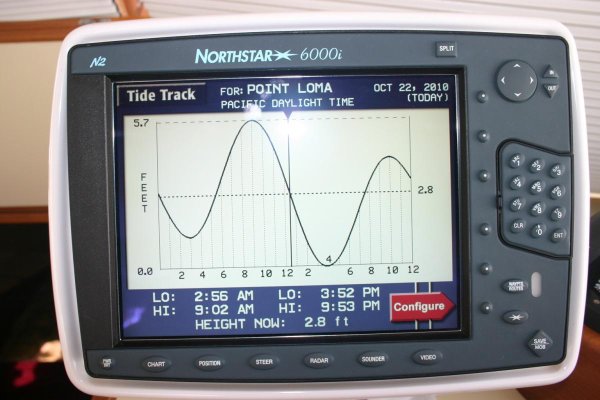MVNoPlans
Senior Member
- Joined
- Apr 5, 2012
- Messages
- 107
- Location
- USA
- Vessel Name
- No Plans
- Vessel Make
- 1965 TollyCraft Voyager
I am curious as to how many of us truly attempt to use the tide and currents to our advantage while cruising? As an example, looking at the tide chart in Budd Inlet for this Friday March 29th, high tide is a +15 at 7:15 am. If I wanted to cruise to Seattle, I would time my departure for between 7 and 8am and ride that ebb which at places would create favorable currents of 4-6 knots, especially between Eagle Island and McNeil Island as well as through the Tacoma Narrows. I have a small quantity of fuel on board so it matters very much to me, plus it has become a bit of a game to see how few gallons I may use on the journey.
I ask this question for two reasons; (1) there was an older thread where Marin stated (and I agree) that tides and currents do not always even out during a cruise such that fuel consumption is the same coming and going; and, (2) because many boaters I know do not seem to give much thought to the tide and currents, they simply go when they are able to go. Part of number (2) may be work schedules, it could be darkness, or even weather.
Since we have many slower boats on this site, it would seem that most of us should care and plan accordingly. Who does and who doesn't?
I ask this question for two reasons; (1) there was an older thread where Marin stated (and I agree) that tides and currents do not always even out during a cruise such that fuel consumption is the same coming and going; and, (2) because many boaters I know do not seem to give much thought to the tide and currents, they simply go when they are able to go. Part of number (2) may be work schedules, it could be darkness, or even weather.
Since we have many slower boats on this site, it would seem that most of us should care and plan accordingly. Who does and who doesn't?

 ), then it can easily take 10+ hours from Olympia to Seattle.
), then it can easily take 10+ hours from Olympia to Seattle.

